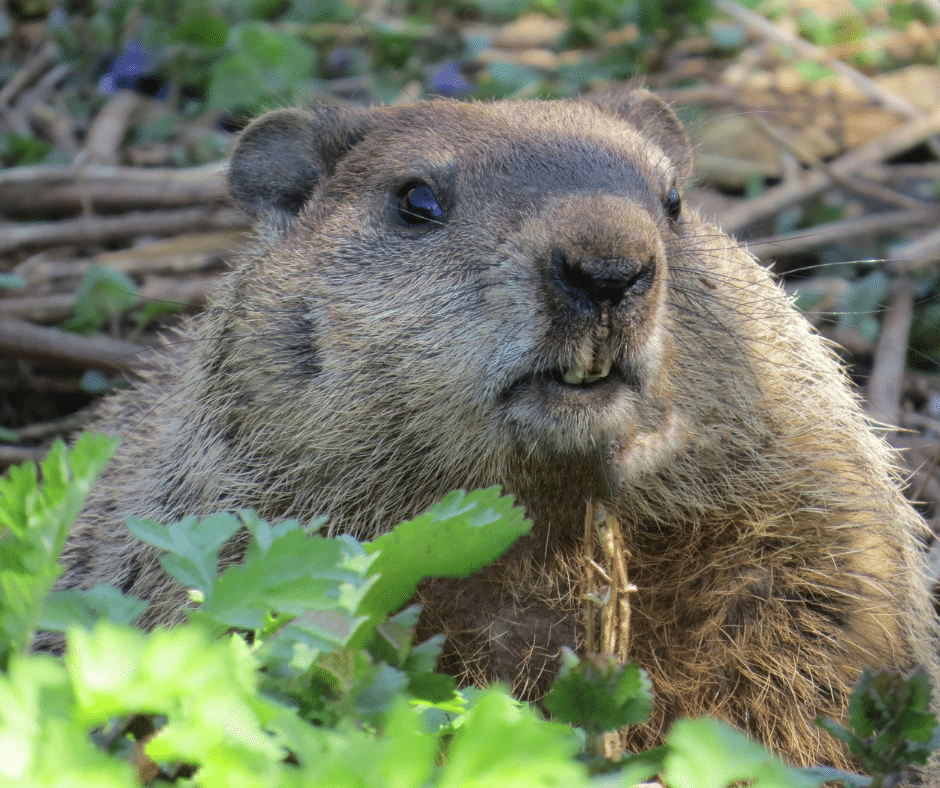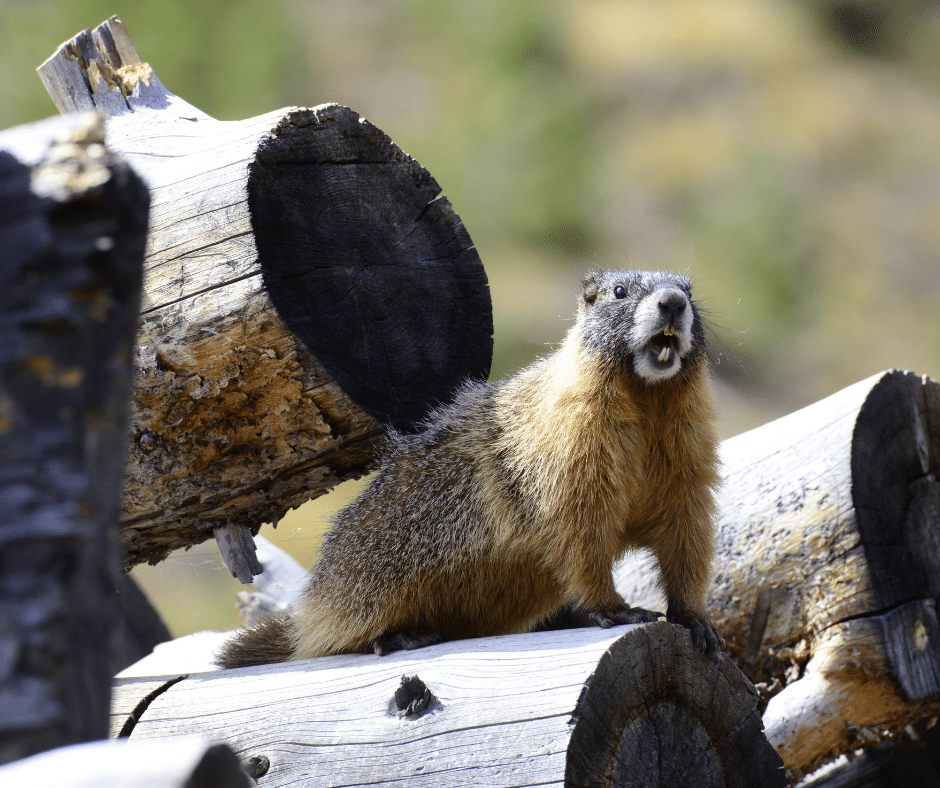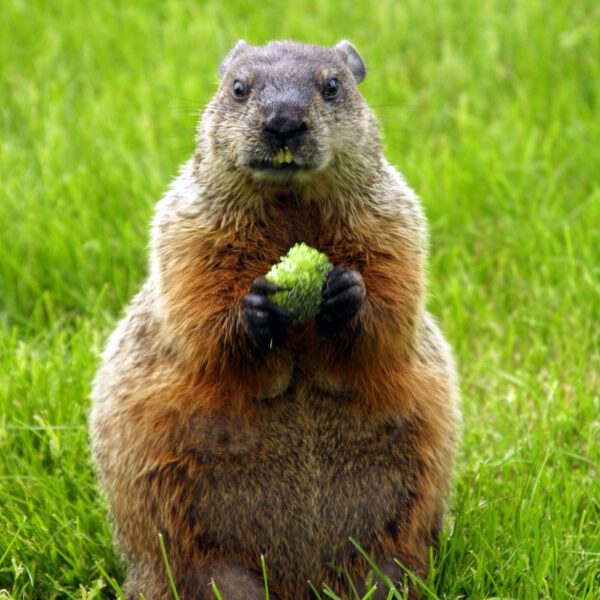All About the Woodchuck
Woodchucks are members of the marmot family and cousins to the ground squirrel and prairie dogs. Depending on where you live, you may better know them as whistle pigs, chucks, or groundhogs.
The woodchuck mainly resides in the eastern United States and along the southern border of Canada. These fuzzy creatures are active in the daytime, often seen basking in the sun.
Woodchucks are adored by many but cause occasional issues for farmers and the average homeowner. They are known to consume crops and disturb home gardens.
Read on to discover more about the wonders of Woodchucks.
Facts About the Woodchuck
Appearance
Covered in grizzly brown and gray fur, Woodchucks weigh about six to ten pounds and are roughly 18 inches in length. Their five-inch tails are bushy and slightly flattened, and their legs are short and muscular. Woodchucks use their sharp claws to defend themselves against predators.
Like all rodents, the woodchuck has two oversized incisors or teeth. Their teeth allow the woodchuck to chew tree bark and roots in the ground. Throughout the rodent’s life, its teeth will never stop growing. Woodchucks continuously grind down their incisors to prevent them from growing too large and causing major health issues.

Behavior
Woodchucks are some of the only large mammals active during the day. The majority of their responsibilities are tended to in the early morning or late afternoon. You will likely see woodchucks resting or soaking up the sun in prime daylight hours.
Breeding
Adult woodchucks only interact when it comes time to mate. Breeding season for the woodchuck starts promptly after emerging from their dens post-hibernation. Then, during the spring months, woodchucks will mate and part ways once again, leaving the mother to care for the young on her own.
Young
Female woodchucks give birth to litters of two to nine kits at a time. Young woodchucks are born blind and naked and will need the care of their mother until about six to eight weeks old. And, at this time, kits will take their first steps out of the safety of their den and gradually leave their mother’s side. Once the woodchuck is two years of age, it is ready to breed and have its own kits.
Hibernation
Woodchucks are one of few true hibernators in the animal kingdom today. In the summer months, they pack on weight to survive harsh winters. From the end of October and into February, the woodchuck goes into a state of suspended animation. Their body temperature dramatically drops to 40 degrees Fahrenheit. The slowing of breathing and heart rate follows. This is how the woodchuck conserves energy through the long winter months without ever needing to venture out of their dens for nutrients.
Groundhog Day
The annual tradition of Groundhog Day is part of American folklore and has been in practice for many years. On February 2nd, each year, Americans await the announcement of an extended winter season or the start of spring- all determined by the actions of a famous woodchuck emerging from its winter sleep.
When the woodchuck crawls out of its cozy den and sees its own shadow, it goes back into hiding. This signifies six more weeks of winter. If the woodchuck is not frightened by its shadow, we rejoice in the start of spring.
Here, the real determiner is whether February 2nd happens to be a cloudy day or bright and clear. Either way, the tradition isn’t a true tell of the approach of spring. Still, it has become an American holiday that especially children look forward to.
Habitat
The underground den of a woodchuck can be as deep as six feet. They are made up of several tunnels and chambers. Like human homes, separate compartments are designated for specific activities such as nesting or bathroom use.
Woodchuck dens will have several entrances. A mound of freshly turned soil typically marks the primary access to the shelter. From this platform, woodchucks can scope their surroundings with the safety of their burrows just a pounce away.
Woodchucks have a wide range of suitable environments. You can find their burrows in meadows, grass fields, forest clearings, or near streams and other small bodies of water. Woodchucks hang out in grassy areas along highways and the yards of urban and suburban homes, as well.
Diet
Primarily vegetarian, the woodchuck gets most of its nutrients from surrounding leaves, berries, and tree bark. Occasionally, the woodchuck will enjoy large insects like June bugs and grasshoppers.
Some of the woodchuck’s favorite foods are:
- Blackberries
- Cherries
- Hark of hickory or maple trees
- Clovers
- Alfalfa

What to Do if You Have a Woodchuck Problem?
Occasionally, these adorable animals can cause chaos in human lives. Woodchucks are known for wandering into backyards and consuming garden plants like peas, beans, and corn. Similarly, crop fields attract woodchucks and take on significant damages.
Woodchucks can also become problematic when overpopulated. Without the proper control, grasslands and forest areas can be overused and depleted.
Here are just a few preventative measures you can take if you suspect a woodchuck problem:
- Line your property or garden with wire fencing. Avoid fencing made of wood- Wood is clearly no match for the woodchuck.
- Allowing your dog or other pet to roam the yard may help deter woodchucks and other unwanted pests.
- Add gopher plant or crown imperial fritillary to your yard or garden. These plants are a woodchuck’s natural repellent.
Count on the Experts at Covenant for Woodchuck and Wildlife Removal
Relocating wildlife may be illegal in your state, so be sure to give the professionals a call before taking action. If you are faced with a woodchuck issue, let the experts at Covenant Wildlife Removal help.
Every day we remove nests, pests, and critters of all sorts from Georgia homes. There is just about nothing we have not seen or removed.
Click here for a free inspection with our expert team of wildlife removal specialists. Covenant Wildlife Removal will be there right away for all your pest removal needs.
Covenant Wildlife Removal is a top-rated local family-owned, full-service wildlife trapping, removal, and repair service.

